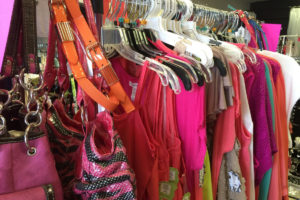 Actions based on good intentions don’t always have good results. One of the most famous of missteps was the Coca-Cola attempt to improve its formula and market “New” Coke. The idea was well-intentioned but the public reception was cool if not outright hostile. According to the website INVESTOPEDIA, “ “Classic Coke” returned to the shelves less than three months after it had been retired.” In the same article, they point out that in 2008 the manufacturer of Motrin found out that there was a problem with the medicine not dissolving properly. Reportedly they did not want to “incur the associated negative publicity, the firm sent out secret shoppers to buy the products off of store shelves, which resulted in a lawsuit in Oregon in 2011.” (“8 Good Intentions With Bad Outcomes”, Lisa Smith, updated December 15, 2017). Laws can have the same problems of unintended consequences, helping one constituency while hurting another.
Actions based on good intentions don’t always have good results. One of the most famous of missteps was the Coca-Cola attempt to improve its formula and market “New” Coke. The idea was well-intentioned but the public reception was cool if not outright hostile. According to the website INVESTOPEDIA, “ “Classic Coke” returned to the shelves less than three months after it had been retired.” In the same article, they point out that in 2008 the manufacturer of Motrin found out that there was a problem with the medicine not dissolving properly. Reportedly they did not want to “incur the associated negative publicity, the firm sent out secret shoppers to buy the products off of store shelves, which resulted in a lawsuit in Oregon in 2011.” (“8 Good Intentions With Bad Outcomes”, Lisa Smith, updated December 15, 2017). Laws can have the same problems of unintended consequences, helping one constituency while hurting another.
In an article in LPM Magazine, “Retail Crime In Los Angeles”, May 1, 2018, An example of a law that was intended to help “reduce prison crowding in California’s overwhelmed prisons and provide treatment rather than jail time to qualifying drug offenders” was Proposition 47. How could such a program go wrong? Who would not benefit from such a law? Apparently, retailers are bearing the burden of unforeseen consequences in this case. According to the article part of Proposition 47 also converted “many non-violent offenses, including shoplifting from felonies to misdemeanors.” The story goes on to say that shoplifting offense under $950 result only in a citation to show up in court. Inevitably career and habitual shoplifters are going to learn what the lines are between a misdemeanor and a felony and they are going to take advantage of those delineations.
It seems that shoplifting has dramatically increased in Los Angeles as criminals have found that it is lucrative for them to engage in the crime with minimal cost if they are caught. The ramifications that are being felt include increased monetary losses for retailers due to theft-related shrink. Worse, the story states that violent behavior from shoplifters is seemingly on the rise. Danger has always been a concern for retailers and especially Loss Prevention professionals when stopping a shoplifter(s). Now that potentially violent criminals have been released because of the reclassification of certain crimes the stakes are higher. The story points out that gangs are becoming more active in shoplifting. As mentioned criminals are quick to learn and they learn rapidly when penalties for a crime become less severe.
Violence in shoplifting cases is becoming more pronounced and not simply in Los Angeles. A story on ketv.com by the reporter, Michelle Bandur, Dec. 20, 2017, referenced a group of women boosting merchandise from retailers in the Omaha area. Detective Galloway interviewed in the report, “said they don’t avoid confrontation and may resort to violence.” He said they have received reports that these women will, “… load bags in front of employees and sometimes I’ve been told by employees they will taunt them.” He went on to describe incidents of the members of the group knocking people to the floor. They have attempted to run over others in a parking lot if they noticed a person trying to take a picture of their license plate. These incidents support data from the National Retail Federation 2017 Organized Retail Crime Survey. According to the survey, 98.5% of responding retailers reported “ORC (Organized Retail Crime) gangs are just as aggressive or more aggressive and violent when compared with last year. 26.5% said that gangs are much more aggressive than in the previous year (pg. 10). If these numbers from the NRF Survey are true, when coupled with Proposition 47 retailers in L.A. may be in for some very rocky times in years to come.
Retailer owners must become familiar with methods to prevent shoplifting without endangering employees in the process. Tried and true methods such as aggressive customer service may not be effective deterrents any longer. Adjustments by Managers may include carefully reviewing hours of operation and not staying open as late at night. If cameras are not in place owners may want to install them to have quality video and pictures for police in case of a serious incident. Starting a Retail Crime Prevention organization in partnership with local police can help identify theft trends and organized and violent persons. Finally, retail theft prevention training from Loss Prevention Systems Inc. can provide more information on how to stop theft and keep your employees safe from harm.
Prop. 47 may have been well-intentioned but it has opened up a Pandora’s Box of problems for California retailers. Through proper training, owners and managers can position store teams to be ready for security and safety issues now and in the future.
 Reviewing your store policies today and training your employees about the ramification of not following them properly is imperative. The consequences of not following those policies properly are too costly to postpone. Employees, as they are human, try to use shortcuts or in some instances, take the easy way out while doing some chores without thinking it may affect the bottom line at the end of the day. Profits for a store cannot be thought of as profits for the owner only, employment and benefits for the employees are inherently tied to those of the owner. If the owner must close the store for loses, the employees lose as well.
Reviewing your store policies today and training your employees about the ramification of not following them properly is imperative. The consequences of not following those policies properly are too costly to postpone. Employees, as they are human, try to use shortcuts or in some instances, take the easy way out while doing some chores without thinking it may affect the bottom line at the end of the day. Profits for a store cannot be thought of as profits for the owner only, employment and benefits for the employees are inherently tied to those of the owner. If the owner must close the store for loses, the employees lose as well. Inventory in a retail store can offer the management and the loss prevention team a clear picture of whether their efforts are working or they need to modify something entirely different.
Inventory in a retail store can offer the management and the loss prevention team a clear picture of whether their efforts are working or they need to modify something entirely different.  It is hard to believe but summer is almost here! What are you doing about it? As crazy as the question may sound there is a reason I ask. What are you doing that will be different than what you did last summer? Do you know what it was you did to inspire additional sales last year? Maybe you didn’t do anything at all differently. Maybe you added a new piece of summer merchandise to your merchandising strategy. How did that item do in sales? Was it a blockbuster for you? On a similar note, how was the customer foot traffic in your store? Did you see an increase in the number of patrons last summer over the rest of the year? If you aren’t asking the questions then you are probably flying by the seat of your pants and that is not going to be beneficial to you at all. Sales tracking and Customer Counting can assist you in exponentially growing your sales.
It is hard to believe but summer is almost here! What are you doing about it? As crazy as the question may sound there is a reason I ask. What are you doing that will be different than what you did last summer? Do you know what it was you did to inspire additional sales last year? Maybe you didn’t do anything at all differently. Maybe you added a new piece of summer merchandise to your merchandising strategy. How did that item do in sales? Was it a blockbuster for you? On a similar note, how was the customer foot traffic in your store? Did you see an increase in the number of patrons last summer over the rest of the year? If you aren’t asking the questions then you are probably flying by the seat of your pants and that is not going to be beneficial to you at all. Sales tracking and Customer Counting can assist you in exponentially growing your sales. Some people in retail look forward to it and some dread it. What am I talking about? Inventory! From the planning stages and meetings with the inventory counting team to the actual inventory day it can all be a lot to accomplish even for the best of planners. But what happens when you get through the actual counting phase? What comes next? You wait for the results. You may get preliminary results immediately but for larger stores booked inventory may take several weeks and they have teams to analyze the results. As a small retailer you may have to analyze the reports yourself but do you really understand what you are looking for? Are your results accurate? Stores have to keep track of what they have on hand and owners need to know where shortage has taken place and how it has happened.
Some people in retail look forward to it and some dread it. What am I talking about? Inventory! From the planning stages and meetings with the inventory counting team to the actual inventory day it can all be a lot to accomplish even for the best of planners. But what happens when you get through the actual counting phase? What comes next? You wait for the results. You may get preliminary results immediately but for larger stores booked inventory may take several weeks and they have teams to analyze the results. As a small retailer you may have to analyze the reports yourself but do you really understand what you are looking for? Are your results accurate? Stores have to keep track of what they have on hand and owners need to know where shortage has taken place and how it has happened. The IT world has a phrase “garbage in, garbage out”. The same concept applies to hiring new employees. If you do not put effort into selecting a new employee, then chances are you will be disappointed down the road.
The IT world has a phrase “garbage in, garbage out”. The same concept applies to hiring new employees. If you do not put effort into selecting a new employee, then chances are you will be disappointed down the road. The scary shoplifting cases we hear and see on TV, or on newspapers in the United States, are becoming too commonplace to rendered us shocked.
The scary shoplifting cases we hear and see on TV, or on newspapers in the United States, are becoming too commonplace to rendered us shocked.  Recently, I conducted an employee theft investigation for a client. I want to share some of the findings from that investigation in the hopes that you can use it to review your own potential for losses.
Recently, I conducted an employee theft investigation for a client. I want to share some of the findings from that investigation in the hopes that you can use it to review your own potential for losses. 